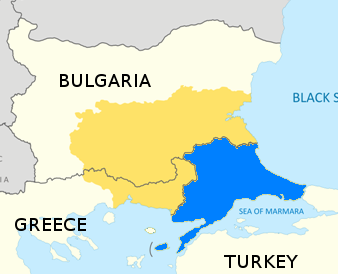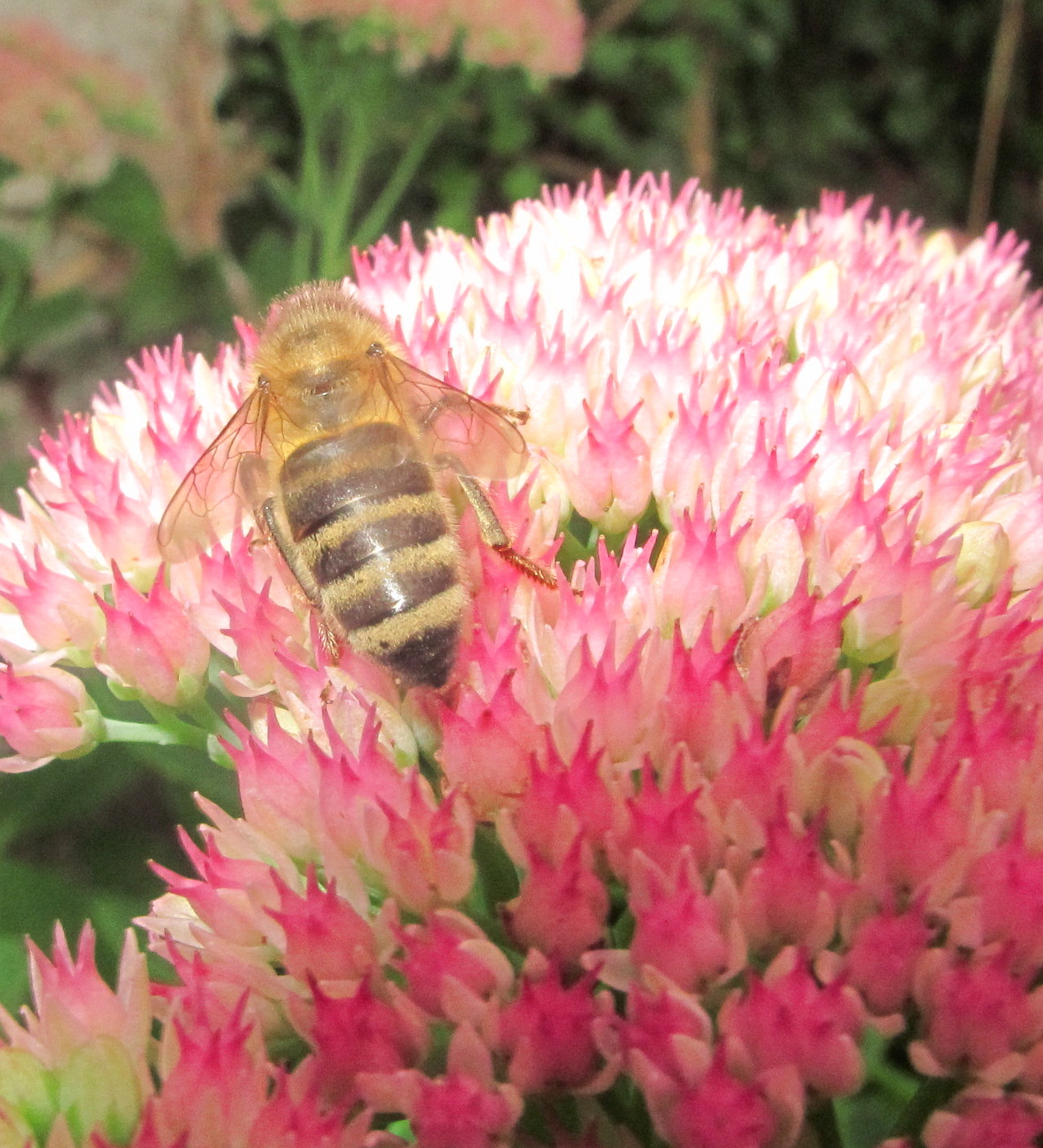|
Apis Mellifera Anatoliaca
''Apis mellifera anatoliaca'' (known commonly as the Anatolian honey bee) is a subspecies of '' Apis mellifera'' (honey bees). Habitat This bee is endemic to the Anatolian region of Turkey, populating the central and western parts of the country, but not European Turkey, as later research identified the honey bees of the Thrace region as primarily '' A. m. carnica''. Taxonomy This bee type belongs to the branch of bee classified by Ruttner (1988) as "Oriental". A recent genetic study confirmed that the sub-species belongs to an Eastern Europe branch of the genotype of the honey bee. Mitochondrial Deoxyribonucleaic acid (mtDNA) analysis of Thracian bees showed some similarities to the Apis mellifera carnica The Carniolan honey bee (''Apis mellifera carnica'', Pollmann) is a subspecies of the western honey bee. The Carniolan honey bee is native to Slovenia, southern Austria, and parts of Croatia, Bosnia and Herzegovina, Montenegro, Serbia, Hungary, ..., although this same s ... [...More Info...] [...Related Items...] OR: [Wikipedia] [Google] [Baidu] |
List Of Apis Mellifera Subspecies
''Apis mellifera'', the western honey bee, has many subspecies. Subspecies of Europe * ''Apis mellifera adami'', classified by Ruttner, 1975 - (the Cretan honey bee) The island of Crete. * '' Apis mellifera artemisia'', classified by Engel, 1999 - (the Russian steppe honey bee) The steppes of Russia. * ''Apis mellifera carnica'', classified by Pollmann, 1879 - (nicknamed the Carniolan honey bee) from the Carniola region of Slovenia, it now dominates the central / western Balkans, Austria, Germany and much of Poland and Turkey - popular with beekeepers due to its extreme gentleness. In 2014-2017 a European wide survey was conducted with 621 colonies, which included the various subspecies kept by beekeepers, it found that the ''A. m. carnica'' was the most docile, had the lowest swarming tendency and the highest hygienic behaviour - a trait closely linked with Varroa sensitive hygiene. * '' Apis mellifera caucasia'' (commonly misspelled as ''caucasica''), classified by Pollmann ... [...More Info...] [...Related Items...] OR: [Wikipedia] [Google] [Baidu] |
Western Honey Bee
The western honey bee or European honey bee (''Apis mellifera'') is the most common of the 7–12 species of honey bees worldwide. The genus name ''Apis'' is Latin for "bee", and ''mellifera'' is the Latin for "honey-bearing" or "honey carrying", referring to the species' production of honey. Like all honey bee species, the western honey bee is eusocial, creating colonies with a single fertile female (or "queen"), many normally non-reproductive females or "workers", and a small proportion of fertile males or " drones". Individual colonies can house tens of thousands of bees. Colony activities are organized by complex communication between individuals, through both pheromones and the dance language. The western honey bee was one of the first domesticated insects, and it is the primary species maintained by beekeepers to this day for both its honey production and pollination activities. With human assistance, the western honey bee now occupies every continent except Antarctica. W ... [...More Info...] [...Related Items...] OR: [Wikipedia] [Google] [Baidu] |
Endemic
Endemism is the state of a species being found in a single defined geographic location, such as an island, state, nation, country or other defined zone; organisms that are indigenous to a place are not endemic to it if they are also found elsewhere. For example, the Cape sugarbird is found exclusively in southwestern South Africa and is therefore said to be ''endemic'' to that particular part of the world. An endemic species can be also be referred to as an ''endemism'' or in scientific literature as an ''endemite''. For example '' Cytisus aeolicus'' is an endemite of the Italian flora. '' Adzharia renschi'' was once believed to be an endemite of the Caucasus, but it was later discovered to be a non-indigenous species from South America belonging to a different genus. The extreme opposite of an endemic species is one with a cosmopolitan distribution, having a global or widespread range. A rare alternative term for a species that is endemic is "precinctive", which applies to ... [...More Info...] [...Related Items...] OR: [Wikipedia] [Google] [Baidu] |
Brother Adam
Karl Kehrle OSB OBE (3 August 1898, Mittelbiberach, Germany – 1 September 1996, Buckfast, Devonshire, England, UK), known as Brother Adam, was a Benedictine monk, beekeeper, and an authority on bee breeding, developer of the Buckfast bee. "He was unsurpassed as a breeder of bees. He talked to them, he stroked them. He brought to the hives a calmness that, according to those who saw him at work, the sensitive bees responded to." – ''The Economist'', 14 September 1996 Biography Due to health problems Kehrle was sent by his mother at age 11 from Germany to Buckfast Abbey, where he joined the order (becoming ''Brother Adam'') and in 1915 started his beekeeping activity. Two years before, a parasite, ''Acarapis woodi'' that originated on the Isle of Wight had started to extend over the country, devastating all the native bees, and in 1916 it reached the abbey, killing 30 of the 46 bee colonies. He travelled to Turkey to find resistant native bees for selective br ... [...More Info...] [...Related Items...] OR: [Wikipedia] [Google] [Baidu] |
Anatolia
Anatolia, tr, Anadolu Yarımadası), and the Anatolian plateau, also known as Asia Minor, is a large peninsula in Western Asia and the westernmost protrusion of the Asian continent. It constitutes the major part of modern-day Turkey. The region is bounded by the Turkish Straits to the northwest, the Black Sea to the north, the Armenian Highlands to the east, the Mediterranean Sea to the south, and the Aegean Sea to the west. The Sea of Marmara forms a connection between the Black and Aegean seas through the Bosporus and Dardanelles straits and separates Anatolia from Thrace on the Balkan peninsula of Southeast Europe. The eastern border of Anatolia has been held to be a line between the Gulf of Alexandretta and the Black Sea, bounded by the Armenian Highlands to the east and Mesopotamia to the southeast. By this definition Anatolia comprises approximately the western two-thirds of the Asian part of Turkey. Today, Anatolia is sometimes considered to be synonymous with Asian ... [...More Info...] [...Related Items...] OR: [Wikipedia] [Google] [Baidu] |
East Thrace
East Thrace or Eastern Thrace ( tr, Doğu Trakya or simply ''Trakya''; el, Ανατολική Θράκη, ''Anatoliki Thraki''; bg, Източна Тракия, ''Iztochna Trakiya''), also known as Turkish Thrace or European Turkey, is the part of Turkey that is geographically a part of Southeast Europe. It accounts for 3.4% of Turkey's land area but comprises 15% of its total population. The largest city of the region is Istanbul, which straddles the Bosporus between Europe and Asia. East Thrace is of historic importance as it is next to a major sea trade corridor and constitutes what remains of the once-vast Ottoman Empire, Ottoman region of Rumelia. It is currently also of specific geostrategy, geostrategic importance because the sea corridor, which includes two narrow straits, provides access to the Mediterranean Sea from the Black Sea for the navies of five countries: Russia, Ukraine, Romania, Bulgaria, and Georgia (country), Georgia. The region also serves as a future con ... [...More Info...] [...Related Items...] OR: [Wikipedia] [Google] [Baidu] |
Thrace
Thrace (; el, Θράκη, Thráki; bg, Тракия, Trakiya; tr, Trakya) or Thrake is a geographical and historical region in Southeast Europe, now split among Bulgaria, Greece, and Turkey, which is bounded by the Balkan Mountains to the north, the Aegean Sea to the south, and the Black Sea to the east. It comprises southeastern Bulgaria (Northern Thrace), northeastern Greece (Western Thrace), and the European part of Turkey ( East Thrace). The region's boundaries are based on that of the Roman Province of Thrace; the lands inhabited by the ancient Thracians extended in the north to modern-day Northern Bulgaria and Romania and to the west into the region of Macedonia. Etymology The word ''Thrace'' was first used by the Greeks when referring to the Thracian tribes, from ancient Greek Thrake (Θρᾴκη), descending from ''Thrāix'' (Θρᾷξ). It referred originally to the Thracians, an ancient people inhabiting Southeast Europe. The name ''Europe'' first referred to ... [...More Info...] [...Related Items...] OR: [Wikipedia] [Google] [Baidu] |
Apis Mellifera Mellifera
The European dark bee (''Apis mellifera mellifera'') is a subspecies of the western honey bee, evolving in central Asia and migrating into northern Europe after the last ice age from 9,000BC onwards. Its original range stretched from the southern Urals in Russia through northern Europe and down to the Pyrenees. They are one of the two members of the 'M' lineage of ''Apis mellifera'', the other being in western China. They are large for honey bees though they have unusually short tongues (5.7-6.4 mm) and traditionally were called the ''German Dark Bee'' or the ''Black German Bee'', names still used today even though they are now considered an Endangered Breed in Germany. Their common name is derived from their brown-black color, with only a few lighter yellow spots on the abdomen. However today they are more likely to be called after the geographic / political region in which they live such as the British Black Bee, the Native Irish Honey Bee, the Cornish Black Bee and the ... [...More Info...] [...Related Items...] OR: [Wikipedia] [Google] [Baidu] |
Carniolan Honey Bee
The Carniolan honey bee (''Apis mellifera carnica'', Pollmann) is a subspecies of the western honey bee. The Carniolan honey bee is native to Slovenia, southern Austria, and parts of Croatia, Bosnia and Herzegovina, Montenegro, Serbia, Hungary, Romania, and Bulgaria. Origin The Carniolan honey bee is the subspecies of the Western honey bee that has naturalised and adapted to the Kočevje (Gottschee) sub-region of Carniola (Slovenia), the southern part of the Austrian Alps, Dinarides region, southern Pannonian plain and the northern Balkans. These bees are known as Carniolans, or "Carnies" for short, in English. At present this subspecies is the second most popular among beekeepers (after the Italian bee). Qualities It is favored among beekeepers for several reasons, not the least being its ability to defend itself successfully against insect pests while at the same time being extremely gentle in its behavior toward beekeepers. These bees are particularly adept at adjusting wo ... [...More Info...] [...Related Items...] OR: [Wikipedia] [Google] [Baidu] |
Apis (genus)
A honey bee (also spelled honeybee) is a eusocial flying insect within the genus ''Apis'' of the bee clade, all native to Afro-Eurasia. After bees spread naturally throughout Africa and Eurasia, humans became responsible for the current cosmopolitan distribution of honey bees, introducing multiple subspecies into South America (early 16th century), North America (early 17th century), and Australia (early 19th century). Honey bees are known for their construction of perennial colonial nests from wax, the large size of their colonies, and surplus production and storage of honey, distinguishing their hives as a prized foraging target of many animals, including honey badgers, bears and human hunter-gatherers. Only eight surviving species of honey bee are recognized, with a total of 43 subspecies, though historically 7 to 11 species are recognized. Honey bees represent only a small fraction of the roughly 20,000 known species of bees. The best known honey bee is the western hon ... [...More Info...] [...Related Items...] OR: [Wikipedia] [Google] [Baidu] |


.jpg)




